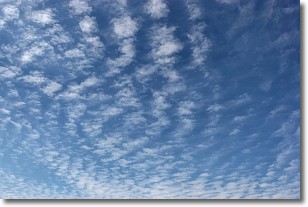Weather Alert in New York
High Surf Advisory issued August 22 at 3:38PM EDT until August 23 at 4:00AM EDT by NWS Upton NY
AREAS AFFECTED: Southeast Suffolk
DESCRIPTION: * WHAT...For the High Surf Advisory, large breaking waves of 5 to 8 feet in the surf zone. For the High Rip Current Risk, dangerous rip currents. For the Coastal Flood Advisory, up to one foot of inundation above ground level expected in vulnerable areas near the waterfront and shoreline. * WHERE...Southeast Suffolk County. * WHEN...For the High Surf Advisory, until 4 AM EDT Saturday. For the High Rip Current Risk, through Saturday evening. For the Coastal Flood Advisory, from 6 PM this evening until 2 AM EDT Saturday. * COASTAL FLOOD IMPACTS...Minor flooding in the more vulnerable locations near the waterfront and shoreline. Some roads and low lying properties including parking lots, parks, lawns, and homes and businesses with basements near the waterfront will experience minor flooding. * SWIMMING IMPACTS...Life-threatening swimming and surfing conditions and localized beach erosion. Life-threatening rip currents are likely for all people entering the surf zone. Anyone visiting the beaches should stay out of the surf. Rip currents can sweep even the best swimmers away from shore into deeper water. * SHORELINE IMPACTS...Along the ocean front, widespread areas of dune erosion with localized overwashes are expected during high tide. Along the north shore of the south fork, 1 to 2 ft breaking waves will result in beach erosion and minor flooding of shoreline roads and properties during this evening's high tide. Along the north facing shore of the barrier islands, 1 to 2 ft breaking waves will result in beach erosion and locally moderate flooding flooding of shoreline roads and properties during this evening's high tide.
INSTRUCTION: If travel is required, allow extra time as some roads may be closed. Do not drive around barricades or through water of unknown depth. Take the necessary actions to protect flood-prone property. Inexperienced swimmers should remain out of the water due to dangerous surf conditions. If you enter the surf zone, always have a flotation device with you and swim near a lifeguard. If caught in a rip current, relax and float, and do not swim against the current. If able, swim in a direction following the shoreline. If unable to escape, face the shore and yell or wave for help.
Want more detail? Get the Complete 7 Day and Night Detailed Forecast!
Current U.S. National Radar--Current
The Current National Weather Radar is shown below with a UTC Time (subtract 5 hours from UTC to get Eastern Time).

National Weather Forecast--Current
The Current National Weather Forecast and National Weather Map are shown below.

National Weather Forecast for Tomorrow
Tomorrow National Weather Forecast and Tomorrow National Weather Map are show below.

North America Water Vapor (Moisture)
This map shows recent moisture content over North America. Bright and colored areas show high moisture (ie, clouds); brown indicates very little moisture present; black indicates no moisture.

Weather Topic: What are Cirrocumulus Clouds?
Home - Education - Cloud Types - Cirrocumulus Clouds
 Next Topic: Cirrostratus Clouds
Next Topic: Cirrostratus Clouds
Cirrocumulus clouds form at high altitudes (usually around 5 km)
and have distinguishing characteristics displayed in a fine layer of
small cloud patches. These small cloud patches are sometimes referred to as
"cloudlets" in relation to the whole cloud formation.
Cirrocumulus clouds are formed from ice crystals and water droplets. Often, the
water droplets in the cloud freeze into ice crystals and the cloud becomes a
cirrostratus cloud. Because of this common occurrence, cirrocumulus cloud
formations generally pass rapidly.
Next Topic: Cirrostratus Clouds
Weather Topic: What are Cirrus Clouds?
Home - Education - Cloud Types - Cirrus Clouds
 Next Topic: Condensation
Next Topic: Condensation
Cirrus clouds are high-level clouds that occur above 20,000 feet
and are composed mainly of ice crystals.
They are thin and wispy in appearance.
What do they indicate?
They are often the first sign of an approaching storm.
Next Topic: Condensation
Current conditions powered by WeatherAPI.com




